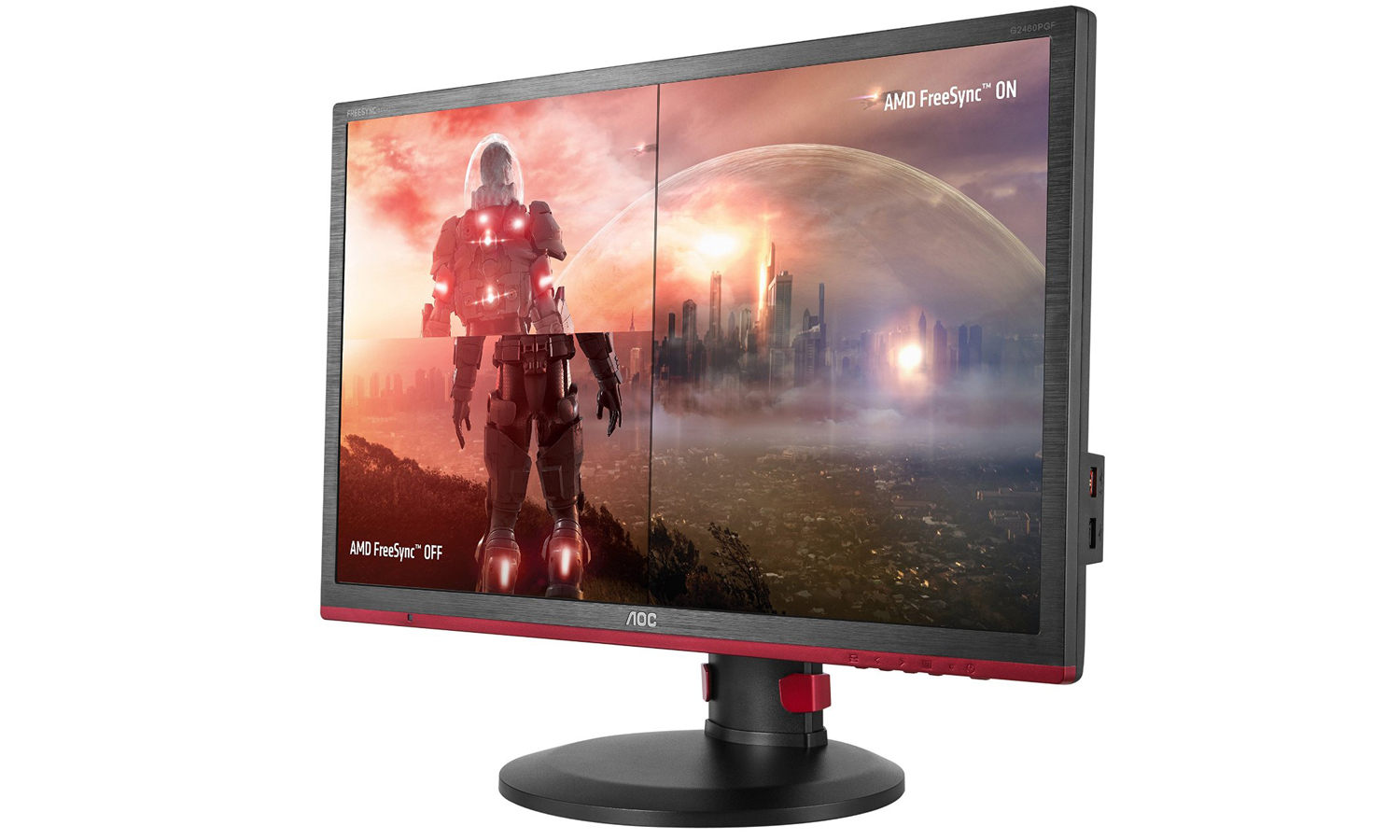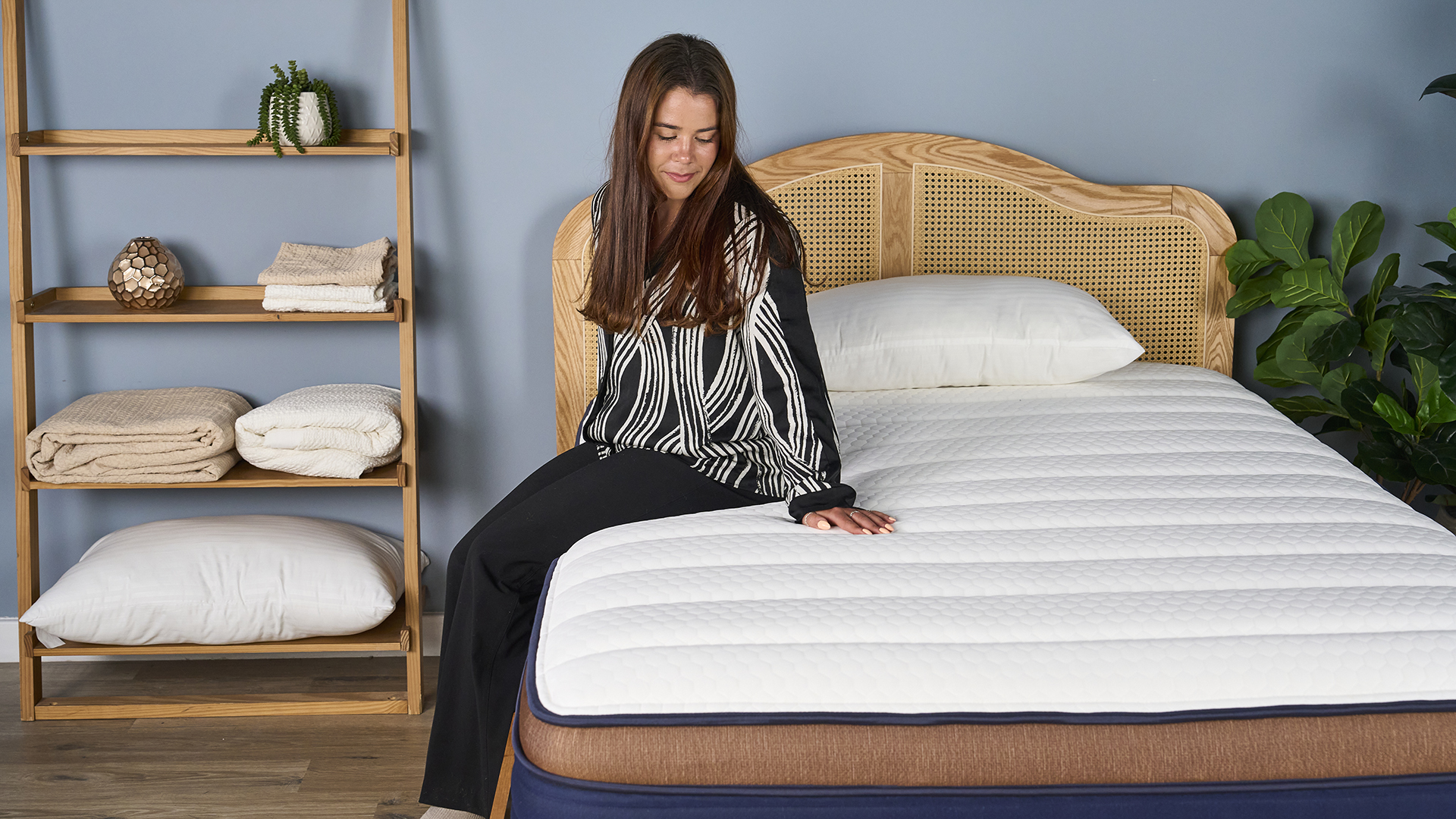Tom's Guide Verdict
The AOC G2460PF displays games in somewhat faithful colors at high frame rates, but cumbersome menus mar the experience.
Pros
- +
Inexpensive
- +
Bright, moderately colorful screen
- +
Attractive design
Cons
- -
Extremely blue picture modes
- -
Unintuitive menu
- -
Weak speakers
Why you can trust Tom's Guide
For players with less powerful gaming desktops, which don't need expensive 4K monitors, the AOC G2460PF ($210) just might do the trick. Used as an inexpensive, full-HD gaming monitor, the G2460PF displays games in somewhat faithful colors at high frame rates. However, its cumbersome menus and questionable picture presets make this monitor hard to recommend enthusiastically. The G2460PF is thoroughly "good enough," and if that's all you need, it may be worth a look.
Design
Black and red are the de facto colors of hardcore PC gaming, and the G2460PF has both of them in spades. With a black stand and a red frame for the monitor, the peripheral is fairly attractive, and not nearly as aggressive as the color scheme might suggest. It's not exactly stylish, but it should blend into any kind of setup.
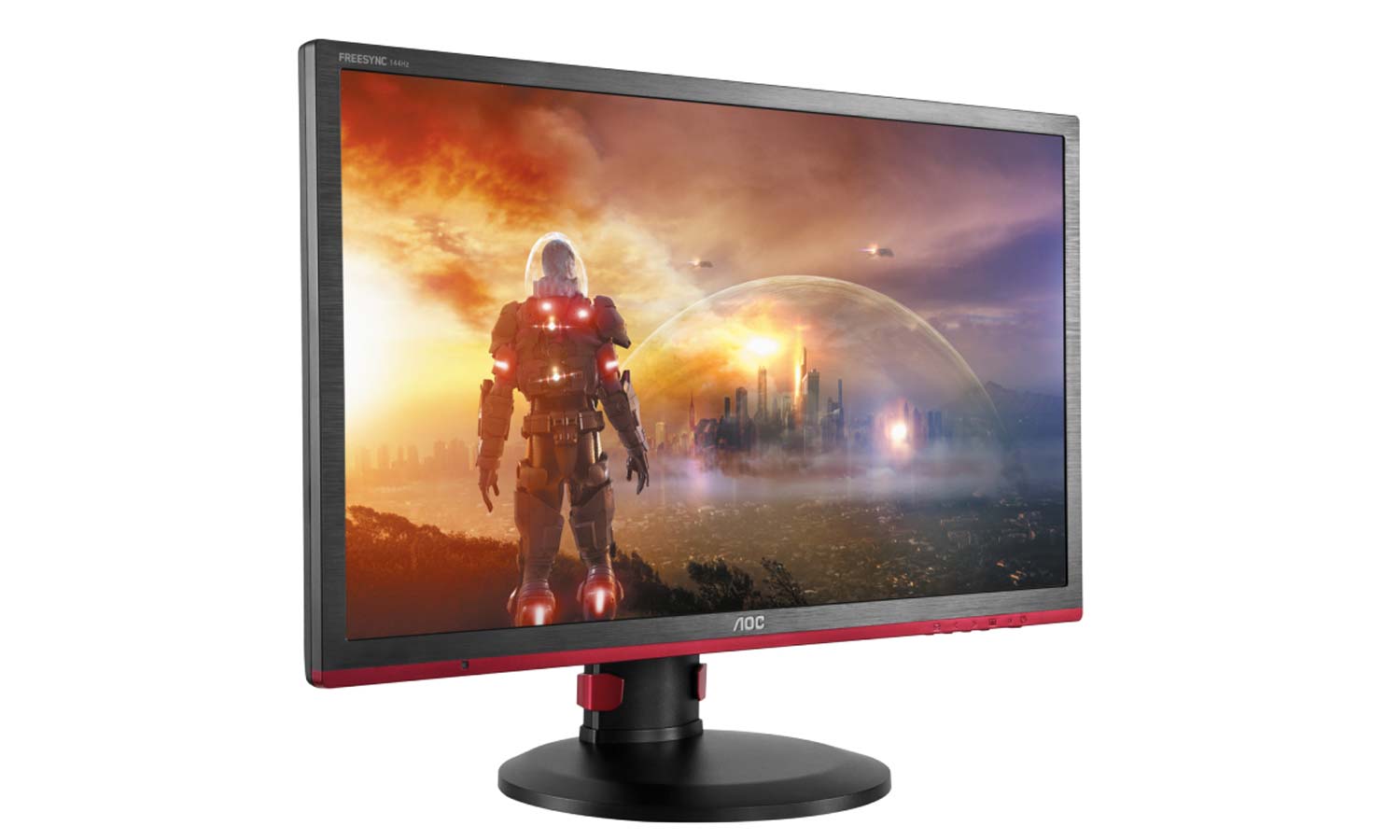
It's simple to set up the 24-inch monitor, as all you have to do is connect it to the stand, then lock it in place with a sliding plastic ring to keep wires in their spots. With just a little pressure, you can get the monitor to move up and down, as well as rotate it up to 90 degrees. The screen also moves back and forth, from -5 degrees to 20 degrees, letting you find an angle that suits your tastes and lighting.
MORE: Best 4K TVs - Ultra High Definition (UHD) Televisions
Ports and Interface
The G2460PF has no shortage of ports, and you could conceivably use them all. There are two USB ports on the side, including one with fast charging for phones and tablets. The underside features two more USB ports along with connections for DVI, HDMI, DisplayPort and D-sub. A headphone jack and digital audio port round things out, making the G2460PF a rather versatile system.
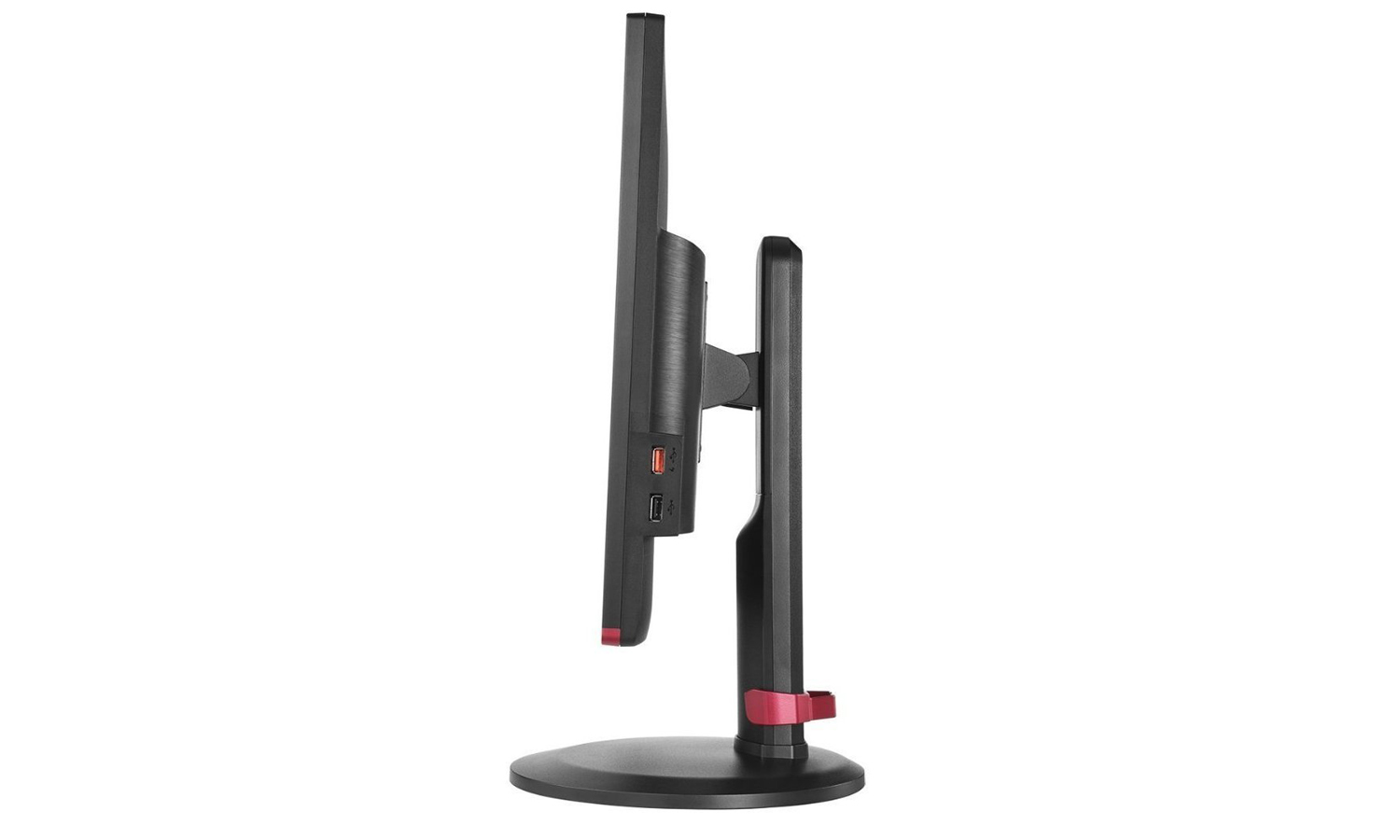
The monitor gets some points for having hard menu buttons rather than imprecise touch controls. But users should prepare for some frustration if they need to do anything other than simply turn the monitor on and off. The various buttons on the bottom of the G2460PF's frame can change the monitor's input, control its Game Mode presets, manage its volume and grant you access to the monitor's full range of menus.
Whether I was pitting James Raynor against Diablo or matching Wolverine against Mr. Sinister, the screen rendered my actions perfectly.
One thing you'll notice right away is that unless you manually dismiss them, the menus never disappear. This is a problem that most other monitors solved at least 10 years ago, but if you finish your foray into the menus and forget to hit the back button the requisite two or three times, you're out of luck. It's not a deal breaker, but it's not unreasonable to expect a new monitor to adopt a simple time-saving mechanism that's been in play for more than a decade.
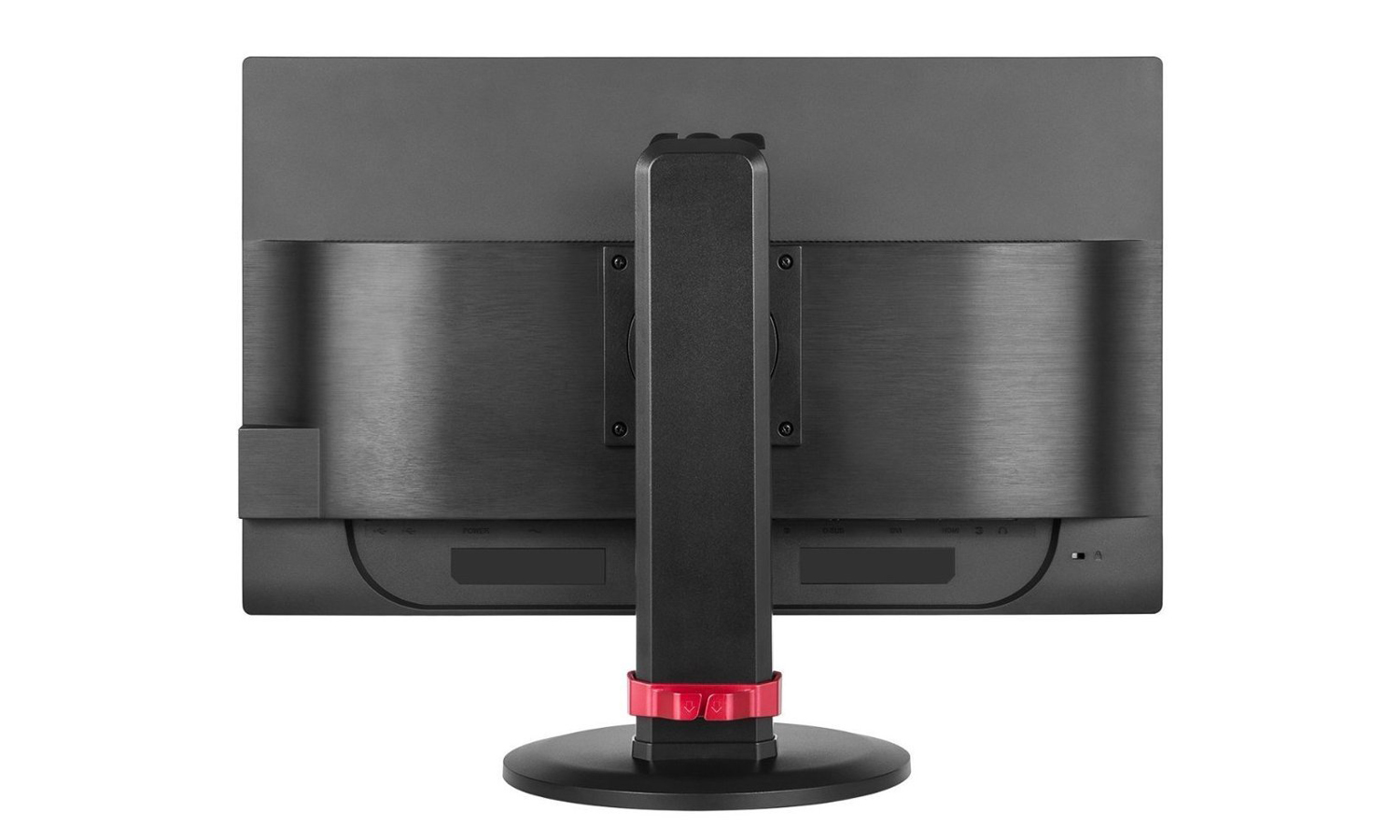
Beyond that, toying with the menu and volume options (for the decidedly lackluster built-in speakers) requires a lot of button presses, but it's not very difficult.
Gaming Performance
I put the peripheral through its paces with Overwatch, Heroes of the Storm, Rise of the Tomb Raider and Marvel Heroes in order to test FPS, MOBA, action/adventure and MMO, respectively. I found that the monitor did an excellent job displaying the action across the board.
Whether I was pitting James Raynor against Diablo in a Blizzard mash-up or matching Wolverine against Mr. Sinister in a boss fight worthy of a comic book, the screen rendered the action perfectly. It showed me frame rates anywhere between 30 and 130 fps with no trouble whatsoever.
The Game Modes presented too-strong blues and too-weak reds, which made even the realistic Rise of the Tomb Raider look like a cartoon.
With AMD FreeSync compatibility, the G2460PF is best-suited to machines with Radeon graphics cards. When I tested the system with an Nvidia GPU, the frame rates were a little lower, but nothing that the naked eye would notice. Either way, you can expect the monitor to display high frame rates with no discernible lag and an admirably fast 144 Hz refresh rate.
Brightness and Color
While the G2460PF looks fairly colorful in its default configuration, the monitor doesn't exhibit the same kind of range as its competitors. It displays only 72.5 percent of the sRGB color spectrum, whereas models like the ViewSonic VX2452mh can display 101.7 percent and the BenQ RL2455HM can handle 101.8 percent (the category average is 97 percent).
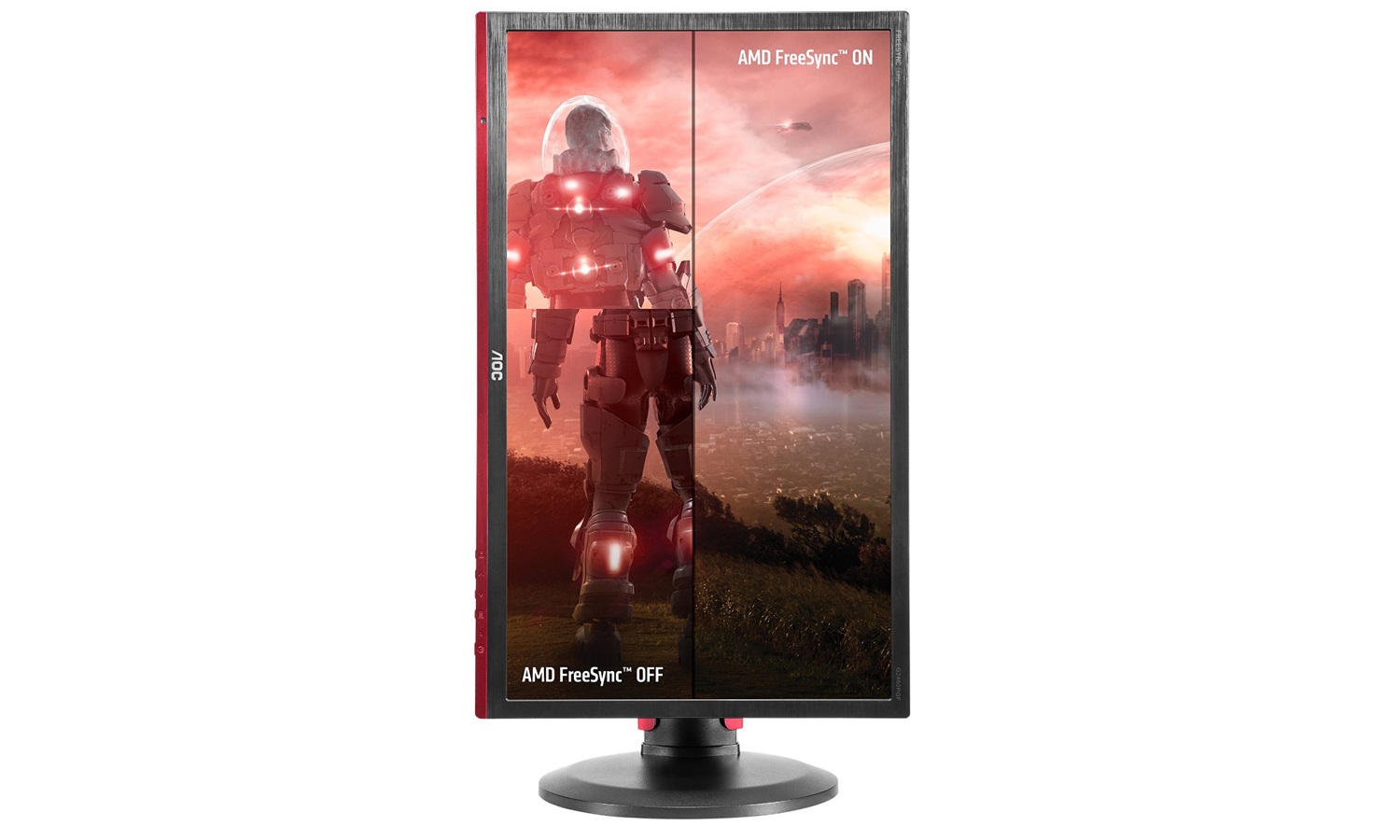
The G2460PF's color accuracy is also nothing special, rating a Delta-E of 5.14 (closer to zero is better). The ViewSonic fared a little worse, at 5.70, but the BenQ still leads the pack, at 3.75.
Toying with the menu and volume options (for the decidedly lackluster built-in speakers) requires a lot of button presses.
On the other hand, the AOC is one of the brightest monitors of its type, with 341 nits on its default setting. Compared to the ViewSonic's 287, the BenQ's 270 and the industry average of 170, the G2460PF's score means the monitor could really light up a dark room, or gaming corner.
Modes and Features
The G2460PF's various picture modes didn't perform as well as I'd hoped. The monitor has a plethora of options to tweak very fine aspects of the color, sharpness, contrast and refresh rate, but as mentioned above, actually manipulating them can be a bit of a pain.
The average user is much more likely to use the built-in Game Modes and picture modes for movies, sports and productivity. I dove into the game modes, eager to see if the options for FPS, RTS, and general Game Modes 1 and 2 would really enhance my overall experience. Instead, they just made things incredibly blue. The modes looked almost identical to each other, with extremely high levels of contrast and an extremely cool palette. While playing Marvel Heroes, even the Incredible Hulk took on a blue sheen. (Although this did once actually happen in the comics, I don’t think it's what the game was going for.)
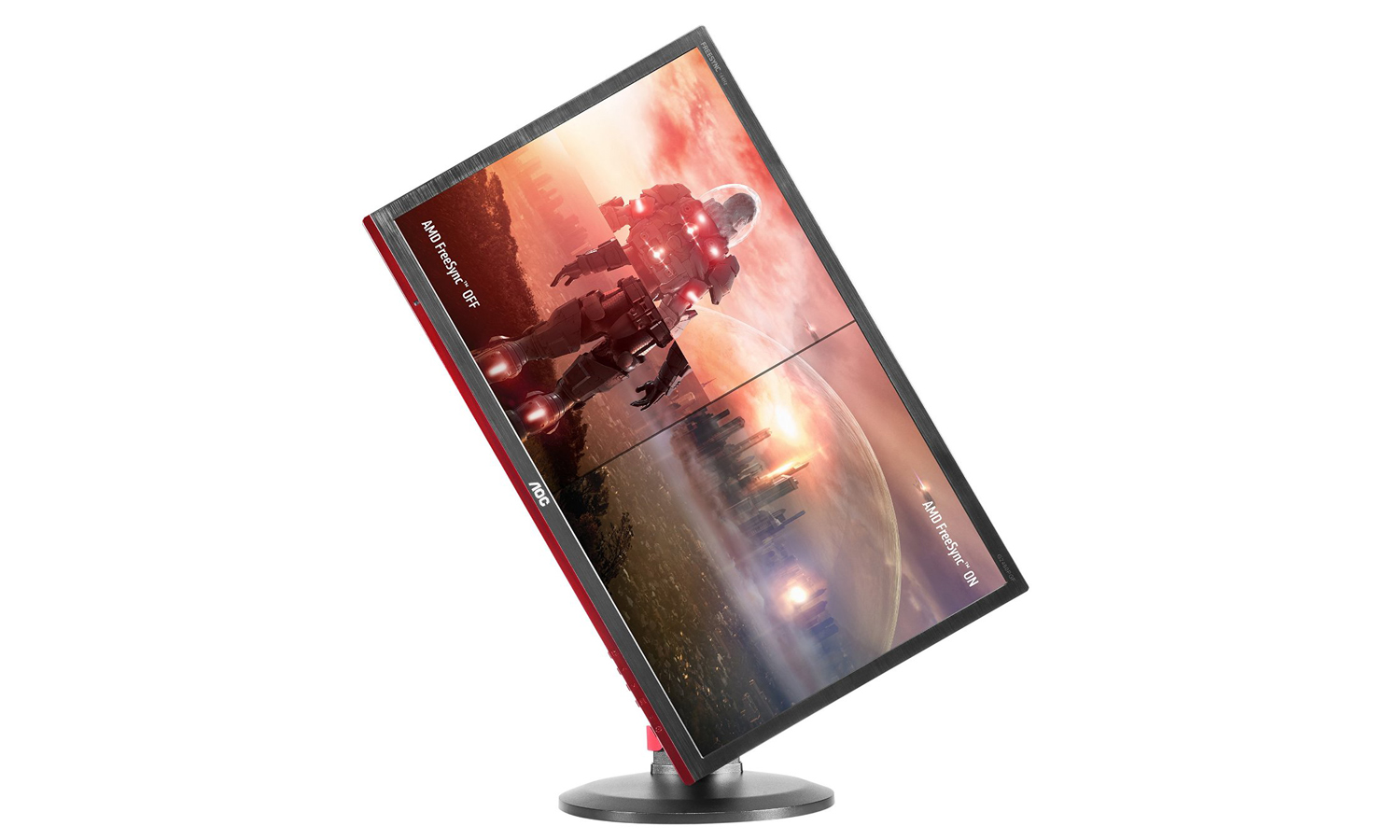
Rise of the Tomb raider on Game Mode 1 and Heroes of the Storm on RTS settings looked almost identical, presenting too-strong blues and too-weak reds, which made even the realistic Rise of the Tomb Raider look like a cartoon. Of the preset modes, only the Racing mode turned down the saturation to acceptable levels, but it also lowered the brightness. Interestingly, turning the Game Mode off made everything, games and videos alike, look great.
The general settings for Movies, Sports and whatnot also tend to make the screen look extremely dark. They're also not very easy to reach from the main menu, meaning there's no real reason to screw around with them. Stick to the default settings, and everything should look fine.
MORE: How to Stream Video to Your TV From a Phone or Computer
Audio
Like most modern gaming monitors, the G2460PF comes with a set of built-in speakers. If you can avoid using them, however, you probably should. By default, the speakers are quiet and have that distinctive fuzziness endemic to cheap audio peripherals. You can boost the volume, but it distorts easily. While they'll get the job done for casual multiplayer gaming, they're not nearly good enough for serious competition or aurally rich single-player adventures.
Bottom Line
While the G2460PF is a little bare-bones and not as user-friendly as it could be, it gets the job done when it comes to displaying games in faithful full HD. At just a little more than $200, the G2460PF is an affordable option, especially if you're looking for a monitor to complement a lower-end gaming desktop or laptop. The BenQ RL2455HM is a bit cheaper and easier to navigate, although it doesn't have adjustable height, and the ViewSonic VX2452mh offers a similar screen at a slightly lower price. But if you're in the market for a 1080p monitor, the G2460PF definitely merits some consideration.
Marshall Honorof is a senior editor for Tom's Guide, overseeing the site's coverage of gaming hardware and software. He comes from a science writing background, having studied paleomammalogy, biological anthropology, and the history of science and technology. After hours, you can find him practicing taekwondo or doing deep dives on classic sci-fi.
